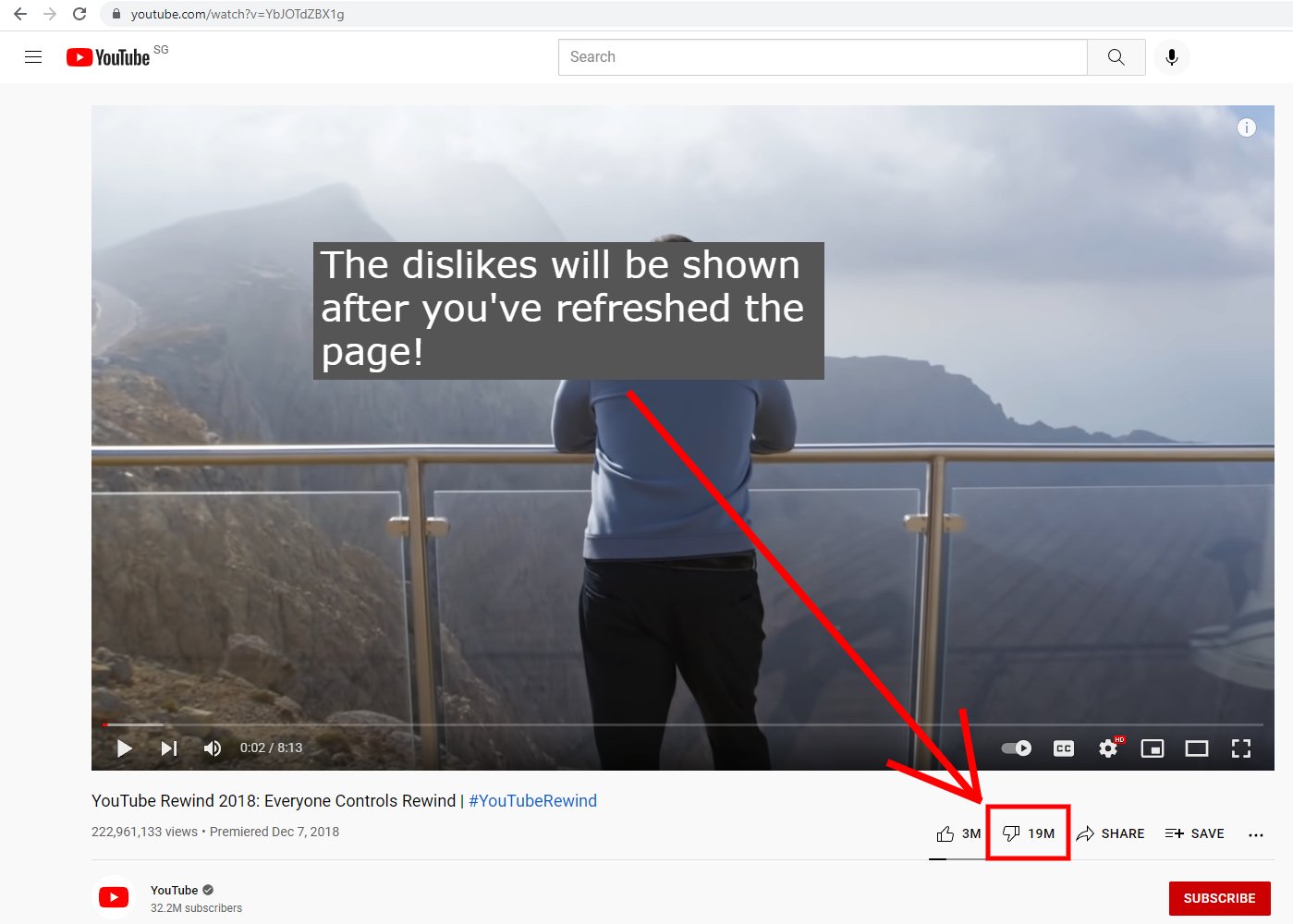In the realm of online video content, YouTube stands as a giant, offering creators a platform to share their passions. One unique feature that often stirs discussion is the dislike button. While it may seem like a simple way to express dissatisfaction, understanding its implications can be quite enlightening. Do dislikes really affect creators? How do they shape viewer engagement? Let’s dive into the world of YouTube dislikes and their significance in video feedback.
Why YouTube Dislikes Matter

At first glance, a dislike might feel like just another negative reaction, but it’s so much more than that. Here are several reasons why dislikes on YouTube are important:
- Viewer Engagement: Dislikes contribute to how viewers interact with content. When audiences express their preferences, creators can better understand what resonates and what doesn’t.
- Content Quality Feedback: Dislikes can serve as constructive criticism. If a particular video gets a high number of dislikes, it can signal that something went wrong, whether it was the video’s quality, the information presented, or even the pacing.
- Algorithm Influence: YouTube’s algorithm takes engagement metrics seriously. Videos with a balanced ratio of likes to dislikes may be pushed more prominently, while those that are disliked frequently might not make it to the recommended lists. This can impact a creator's reach.
- Creator Growth: For aspiring YouTubers, understanding dislikes helps in their growth journey. A video that gets a lot of dislikes can prompt creators to evaluate their approach, leading to improved content in the future.
- Community Dynamics: Dislikes can reflect community sentiment. If a creator shifts their content style or strays from their original theme, dislikes might indicate that fans are not on board with the change.
It’s essential to remember that dislikes, while seemingly negative, can actually foster a healthier dialogue between creators and their audience. Instead of seeing them as mere criticism, they can be viewed as an opportunity for growth and improvement. In a world where feedback is crucial, understanding the role of dislikes can empower both creators and viewers alike.
Also Read This: Turning a YouTube Video into an Alarm: What You Need to Know
3. How to View Dislikes on YouTube Videos
Have you ever found yourself curious about how many people disliked a YouTube video? You're not alone! Dislikes can be an important metric for understanding audience reception. Here’s how you can easily view dislikes on YouTube videos:
Step 1: Navigate to the Video
First, head over to the YouTube video you want to check. Whether you stumbled upon it via a search, link, or recommendation, just click on the video to open it.
Step 2: Locate the Like/Dislike Buttons
Underneath the video player, you'll see the like (thumbs up) and dislike (thumbs down) buttons. Originally, the dislike count was visible right next to these buttons, but as of late 2021, YouTube made the dislike count private to deter harassment. However, you can still interact with these buttons!
Step 3: Analyze the Engagement
Even though the dislike count isn’t visible, you can gauge the overall engagement. If the like button is significantly higher than the dislike button (which you can still click), it’s a good sign that viewers appreciated the content. Conversely, if the likes and dislikes seem closely matched, it might indicate mixed feelings.
Step 4: Use Third-Party Tools
If you’re really keen on figuring out the dislike metrics, consider using third-party browser extensions like 'Return YouTube Dislike'. This tool can help you see the historical dislike count for a video and understands how viewers feel about the content. Just make sure it’s from a reputable source!
Remember, while dislikes can provide insight, they don’t tell the whole story. Consider the comments section or the video’s overall engagement to truly understand the feedback.
Also Read This: How Many Gigabytes Does YouTube Use? Understanding Data Consumption
4. Interpreting Feedback from Dislikes
Now that you know how to view dislikes, let’s dive into interpreting what those dislikes might mean. Dislikes can be a form of constructive criticism when understood correctly, so let’s break it down:
- Content Quality: A high number of dislikes might suggest that viewers found the content lacking in some way. Maybe the video was poorly produced, or the information was inaccurate. Take a closer look at the comments; they often provide context for the dislikes.
- Expectations vs. Reality: Sometimes, dislikes stem from mismatched expectations. If a video promises a tutorial but delivers only general information, viewers may feel disappointed. Analyze your titles and thumbnails to ensure they accurately reflect your content.
- Target Audience: Consider whether your video resonates with your target audience. Dislikes may indicate that the content wasn’t relevant or appealing to the viewers who clicked on it. Engage with your community to understand their preferences better.
- Content Length: Length can also play a role. If a video is too long without delivering value, viewers might check out but leave a dislike in frustration. Strive for a balance; short and engaging is often better than long and drawn out.
To sum it up, dislikes aren’t the end of the world. Instead, view them as opportunities for growth. They can guide you in refining your content strategy and improving viewer satisfaction. Remember, every piece of feedback, even the negative ones, can help you become a better creator!
Also Read This: Does YouTube TV Have YES Network and How to Watch It
5. Best Practices for Responding to Dislike Feedback
Receiving dislikes on your YouTube videos can feel disheartening, but it’s essential to approach this feedback constructively. Here are some best practices to help you respond effectively:
- Stay Calm and Objective: Your first reaction might be frustration or disappointment. Take a step back and view the feedback objectively. Remember, dislikes aren’t personal attacks—they’re opportunities for growth.
- Analyze the Comments: If people are leaving comments along with their dislikes, read through them carefully. Look for recurring themes or specific critiques. For example, if multiple viewers mention poor audio quality, it’s a clear signal to improve in that area.
- Engage with Your Audience: Don’t shy away from addressing the dislikes. Consider creating a follow-up video where you discuss the feedback and explain how you plan to improve. This shows viewers you value their opinions and are committed to enhancing their experience.
- Refine Your Content Strategy: Based on the feedback, adjust your content strategy. If viewers dislike certain video topics, pivot your focus to what your audience enjoys. For instance, if you run a cooking channel and your dessert videos receive negative feedback, try incorporating more main dishes instead.
- Experiment with Formats: Sometimes, it’s not the content itself but how it’s presented. Try different video styles—consider vlogs, tutorials, or live Q&As. This experimentation can help rekindle interest and encourage more positive interactions.
Ultimately, responding to dislikes is about creating a dialogue with your viewers. They want to feel heard, and when you actively engage with their feedback, you foster a stronger community and improve your content.
6. Conclusion: Leveraging Feedback for Improved Content
In the dynamic world of YouTube, feedback—both positive and negative—is invaluable. Dislikes, while often perceived as negative, can serve as a powerful tool to refine and enhance your content creation. Here’s how to leverage this feedback effectively:
- Embrace Dislikes as Learning Tools: Instead of viewing dislikes as a setback, consider them a chance to learn. Analyzing why viewers didn’t resonate with your content can lead to significant improvements.
- Focus on Engagement: Prioritize engagement over sheer views. High engagement levels, even amid dislikes, can signify a dedicated audience. Responding to comments and fostering discussions can turn negative feedback into constructive conversations.
- Set Realistic Goals: Don’t aim for perfection. Instead, set achievable goals for your content based on viewer feedback. This can mean creating a series of videos on a particular subject or experimenting with different video lengths.
- Continuously Evolve: YouTube is an ever-changing platform, and so are audience preferences. Stay adaptable and open to evolving your content style based on viewer input.
- Celebrate Progress: Acknowledge the improvements you make over time. Share milestones with your audience to create a sense of shared journey and community.
In conclusion, dislikes are just one piece of the puzzle. By embracing feedback thoughtfully and proactively, you can transform your channel into a space that reflects your growth as a creator and resonates deeply with your audience. Remember, every dislike is just another step toward creating content that truly connects!
 admin
admin








